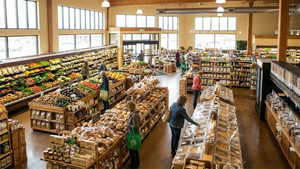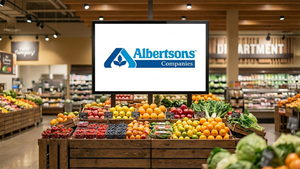
Federal Reserve Gov. Michael S. Barr lauded progress made in bolstering financial inclusion in the U.S. at a Fed conference this week but emphasized that “there is so much more to do to deepen and widen financial inclusion to many millions of people in America who could benefit from it.”
Barr’s remarks came at “Unleashing a Financially Inclusive Future,” the second annual Financial Inclusion Conference hosted by the Federal Reserve Board in Washington. The Fed considers financial inclusion part of its mission of promoting a healthy and growing economy and a safe and stable financial system.
“Better access to affordable financial services, geared to the needs of underserved families and entrepreneurs can help them to build more secure lives, stronger communities, and a stronger American economy,” Barr said. “Consumers are two-thirds of economic activity, so access to credit for low-and-moderate income households and small businesses helps the economy to grow.”
Barr focused his speech on four ways that the public and private sectors are helping to increase financial inclusion. Those efforts include:
1. Greater access to bank accounts and financial services
According to the Federal Deposit Insurance Corporation’s 2023 National Survey of Unbanked and Underbanked Households, the number of Americans without bank accounts is at the lowest it has been since the survey began in 2009. Yet, there remain groups that struggle with low account access, including those who are disabled, those without a high school diploma and minority groups, among others.
Barr cited one private-sector program that has helped to address barriers to account access: the Bank On program, supported by the Cities for Financial Empowerment Fund. Bank On is led by coalitions of regional financial institutions, community groups and local governments working together to bring households into the financial system.
“The program has spread and taken root in communities through the coalition model, which involves establishing relationships with local and state governments, public officials and community organizations,” Barr said. “These partners, engaged with and trusted by their communities, have helped overcome apprehension about bank accounts and helped drive the outreach needed for any business to find new customers.”
Over 46,000 bank branches nationwide offer a certified Bank On account. The Fed is one of the partners in the effort.
2. Faster payments services
“Financial inclusion also requires timely access to funds. People living paycheck to paycheck incur the greatest costs of waiting for these funds. Cash-strapped households and businesses need access to their funds right away, and they need reliable ways to pay expenses when they are due (and when they have the funds to pay them),” Barr said.
In 2023, the Fed launched FedNow, an interbank payment system for banks and credit unions of all sizes to instantly and securely transfer money for their customers, any time of the day, on any day of the year.
“We are already seeing early adopters rolling out new services that can benefit consumers. One example is the ability for gig-economy workers to gain instant access to earned wages, which can make a big difference in household cash flow management,” Barr said.
“We expect these types of innovations will continue to expand in the coming years and be delivered in new contexts, ultimately bringing broad benefits to liquidity-constrained households and small businesses that need to tightly manage payment inflows and outflows.”
3. Responsible small-dollar lending methods
According to the Fed’s 2024 Survey of Household Economics and Decisionmaking, when asked how they would respond if confronted with an unexpected $400 expense, nearly 20 percent of adults said they would have paid at least in part by selling something; using a payday loan, deposit advance, or overdraft; or would not be able to pay for the expense.
“Access to small-dollar loans from banks can help consumers smooth through the ups and downs of income and expenses. I think many people would be surprised how widely this help is needed,” Barr said.
The Fed has noted a rise in bank-offered products that are helping to increase access to safer, lower-cost forms of small-dollar lending. The Fed and other bank regulators issued guidance responsible small-dollar loan programs in 2020, saying they must treat customers fairly, have effectively managed risks and be underwritten based on prudent policies.
“Most banks that have offered small-dollar loan products since 2020 follow these principles, and it has had a positive impact on the loan terms they offer. Loan terms have better matched customer needs and rates have come down,” Barr said.
4. The use of alternative data to promote credit access
Another channel for improving financial inclusion is the use of alternative financial data to supplement the traditional measures that banks have relied on to judge the creditworthiness of borrowers with limited or no traditional borrowing history. For example, lenders can evaluate cash flow — steady income and bill payments—as a measure of the likelihood of loan repayment.
“Alternative data can help lenders take a ‘second look’ for consumers who would otherwise not qualify based on the more traditional credit-score-based underwriting models,” Barr said.
In addition to making less expensive and more suitable loans available, alternative data often allows faster loan decisions. This is an important consideration for low- and moderate-income borrowers, who tend to have little savings, and struggle with meeting an unexpected expense, he said.
“We have made great progress, but I am certain that there are still many people whose finances and lives could improve with a bank account suited to their needs and economic circumstances,” Barr said “I applaud the work of financial inclusion leaders in doing what they can to make bank accounts available and better tailored to the needs of low- and moderate-income households.”
Read more: Bringing banking to Nepal’s underserved population





